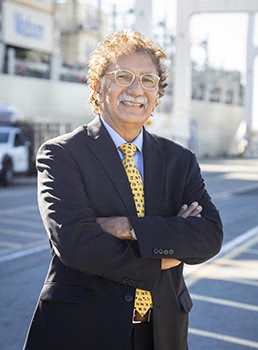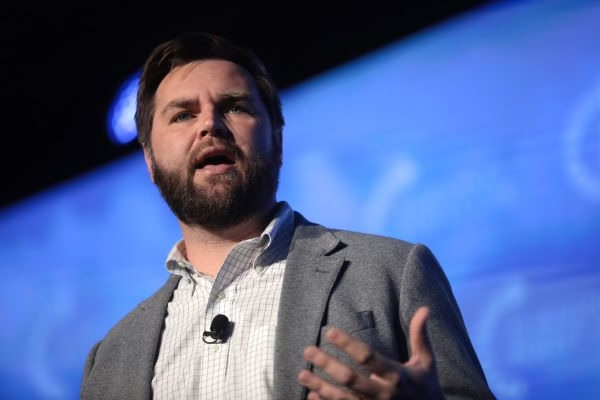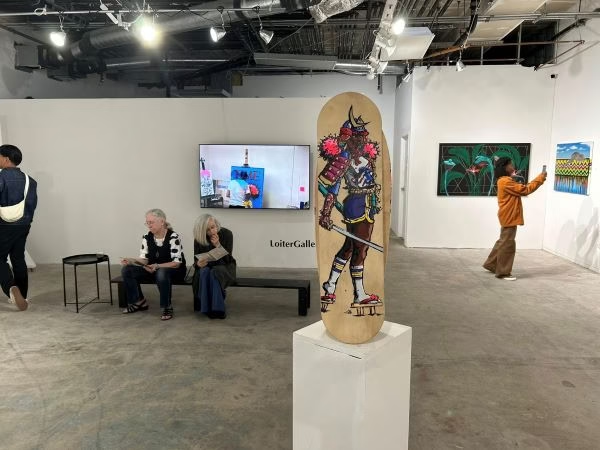Life and Death, Courtesy of Jones Chemicals in the Harbor Gateway
By Rick Thomas, Columnist and Harbor Gateway Community Activist
They call themselves “neighbors.”
And wanted us to respond to them using the same title.
“Them” being Jones Chemicals, Inc., that is.
Neighbors?
How about… polluters?
Residents learned at a recent Harbor Gateway South Neighborhood Council meeting, hosted at Councilman Tim McOsker’s new field office at the Enclave, that Jones Chemicals, Inc. wants to introduce itself to the community.
More on the Enclave as you continue reading… but drumroll please… “Let’s bring to the stage… Jones Chemicals, Inc.!”
For those of us who live in Harbor Gateway, Jones Chemicals, Inc. hasn’t brought goodwill or welcome mats.
Jones Chemicals, Inc.?
They’ve brought nothing more than danger. And misery. And chaos.
They are nothing more than environmental polluters.
Not neighbors.
Jones Chemicals’ footprint is just steps from the modular-built Cheryl Green Boys & Girls Club facility, because the soil is too contaminated for permanent foundations. Also, I live in that neighborhood. What the Del Amo Action Committee now calls “The Kill Zone.”
It’s called “The Kill Zone” because of that environmental polluter known as Jones Chemicals, Inc. The place where toxins seep into the ground, cloud the air, and kill residents in the Harbor Gateway.
But silence echoes in the chambers of City Hall.
Until now.
Thanks to the Del Amo Action Committee — DAAC for short — residents are finally organizing.
But let me be clear: one mistake from Jones Chemicals, Inc. dumping chemicals here, one lapse in containment or oversight, and the results could be catastrophic.
I want more Christmases. More time to sing along with The Whispers: “And this Christmas will be a very special Christmas… for me.”
But that future isn’t promised — not here.
Not in “The Kill Zone.”
Cancel Christmas, pal.
Politicians are shaking hands with corporations like Jones Chemicals, Inc., while those same corporations are poisoning us as law enforcement institutions cling to the motto “to protect and serve” — but who, exactly, are they protecting and serving?
Apparently not us.
Here in the “The Kill Zone,” families breathe and step onto chemicals they can’t even pronounce. Children walk past fenced-off “cleanup sites” on their way to school or to the Cheryl Green Boys & Girls Club. Asthma, rashes and unexplained illnesses have become a way of life for those of us living here.
All from the likes of Jones Chemical, Inc.
For a time, I tried to play the game. I believed maybe, just maybe I could be transactional — trade a little favor by being quiet for a little safety — a little leverage for a little peace of mind.
I thought I could work with the system.
Maybe work within the system.
But I can’t sell out my community in the Harbor Gateway.
I just can’t.
That ain’t me.
And that community, by the way, is stretching into the Harbor City section of Tim McOkser’s Council District 15.
More to come on that.
I’d rather work for free, for the people who actually live here — the ones who actually breathe the toxic air and walk on the toxic ground, rather than sell out to weak politicians.
Or sell out to those who are supposed to protect and serve.
Because they are killing us, slowly but surely. Murdering the safety of our communities…
And it’s unacceptable.
There’s no negotiating with rot that allows a company like Jones Chemicals, Inc. to operate just feet from children’s playgrounds and homes.
It’s not a negotiation.
It’s a fight.
I won’t tell the whole story, but I will give a hint or two on what may be coming. But until our air is clean, our soil is safe, and our children can play without fear of contamination, the Del Amo Action Committee isn’t backing down.
And neither am I.
Let’s circle back to that neighborhood council meeting at Tim McOsker’s new office, located in the ultra-modern retail/office complex on 190th Street. You’ve probably driven past the Enclave, but if you blink, you’ll miss it. There’s Nook, the popular coffee shop, Trademark Brewery, the Long Beach Fish Grill (still on my to-do list), and one of my favorites — 123 Pho.
This place is cool.
Buzzing.
Optimistic.
But dig a little deeper, and you’ll see what’s festering beneath the surface of this office complex. Because guess who rents office space at the Enclave along with Councilman Tim McOsker?
Jones Chemicals, Inc.
The environmental polluters.
That’s right — Councilmember McOsker’s office is on the first floor, and Jones Chemicals?
Ninth floor.
Same building.
Same air.
I don’t need PhD-level intelligence to do the math here. Truly my minus-7 credits in a baccalaureate degree in political science at Temple University are enough education for me to be able to read between the lines.
Mama didn’t raise no fool!
Brings to mind the phrase, “There are no secrets in life, just hidden truths that lie beneath the surface.”
That quote comes from an appropriate character in the Showtime television series Dexter. The lead character was a serial killer, so he fits right in with what’s going on with the environmental polluters known as Jones Chemicals, Inc.
I liked Dexter when it was on Showtime, but watching it is different than, well, living it.
At the neighborhood council meeting, sitting right in front of me was Tim Ross, vice president of operations for Jones Chemicals, Inc. He looked familiar, and for a moment I couldn’t place him.
But then it clicked — Tim Ross from Jones Chemicals, Inc. manages the trucks I’ve seen rolling through residential streets, transporting hazardous materials.
I’ve met him before.
That was the first time he was rude to me.
So, when it came time for questions, of course I spoke up. With all the sarcasm I could muster, I asked, “Oh, so your trucks are the ones — marked with ‘JCI’ — driving illegally down residential streets, past children and families and cats and dogs and chickens and ducks and veterans and yes, even gangbangers, right?”
Alright, I embellished a bit, but you see my point.
He didn’t like that.
Not one bit.
But guess what, Tim Ross?
I don’t care.
This community has fought hard to stop tractor trailers and other big rigs from using residential streets to get to the freeways to make their deliveries. We understand fully where we live and that it’s not going to get any better. More real estate is now available for other trucking firms to locate in the Harbor Gateway.
It’s a byproduct of where we reside.
But we don’t have to live in “The Kill Zone.”
We’re going to see a lot of trucks in the hood. We worked with the trucking companies on Denker Avenue to stay the hell off residential streets in the Harbor Gateway. The Los Angeles Police Department collaborated with this community to put up signage to prevent that nasty practice from continuing.
So then I learned from Tim Ross that Jones Chemicals, Inc. was given the OK to roll down residential streets. So, I asked the question aloud, “Who gave you, Jones Chemicals, Inc., permission to go down residential streets in our community?”
I didn’t like the answer. But I can be transactional if I get what I need to protect members of my community. So it’s not about me.
For now.
Back to that neighborhood council meeting.
After my question, Tim Ross from Jones Chemicals, Inc. went on a slight tirade.
He was rude to me, again.
“Our trucks don’t come down those streets and if you see any of our trucks going down those streets, I will fire that driver!” he shouted.
“All right, calm down fool,” I said.
OK I said that to myself. I’m a runner not a fighter.
“Um, Tim Ross from Jones Chemicals, Inc.? Would you like to see the photos… of your trucks… going down Del Amo Boulevard?”
Pissed off. I left. I was done.
Everything stinks here as Jones Chemicals, Inc., the polluters in the Harbor Gateway, are the developers of the so-called “The Kill Zone.” Maybe I should have asked, “Why the hell is Jones Chemicals, Inc., the polluters, not our neighbor, introducing themselves to a community of residents that they are killing?”
In a text that night I wrote to Councilman McOsker about what took place in HIS office.
“I am just stunned.”
Environmental polluters… Jones Chemicals, Inc.
Tim McOsker texted back that he would take care of it in the morning. I texted, “If this were San Pedro we wouldn’t be having this conversation.”
There were a lot more words in that conversation. But it’s just another example of how the elected leaders and those that are supposed to be looking out for the best interest of the communities they represent, don’t.
They just don’t.
But “We don’t give up until the clock says zero.” Sports verbiage I heard this year from an NBA all star who competed to the point where he will miss a full year of future contests and competition because of a torn achilles tendon in Game 7 of the NBA championship.
You don’t give up “until the clock says zero.”
“… our office has received numerous concerns from residents regarding truck traffic associated with your facility along Del Amo Boulevard,” Councilman Tim McOsker wrote in a letter to Tim Ross at Jones Chemicals, Inc.
“Our office will be coordinating with the Los Angeles Department of Transportation to install the appropriate signage along Del Amo Boulevard to ensure compliance and improve safety and quality of life for nearby residents,” he continued.
I guess sometimes you gotta be a prick, and well, rude, to get shit done.
“Continued violations may result in further enforcement action.”
Well, that could have been a bit stronger, Tim. I might have written something like, “Continued violations WILLresult in further enforcement action.”
Jones Chemicals, Inc. is killing human beings in the Harbor Gateway.
There’s no “may result” rather “will” result.
Jones Chemicals, Inc. went through an Environmental Protection Agency inspection in 2024 and the EPA determined that Jones Chemicals, Inc. had seven… I repeat, seven “areas of concern” that needed to be addressed at their Harbor Gateway facility.
Seven “areas of concern.”
Seven.
Just one area of concern is troubling enough. But seven?
That’s just this location.
Do a search for Jones Chemicals, Inc. and another one of their environmental polluting sites pops up. This is in Caledonia, New York. From the EPA report on issues at that location they wrote, “Spills occurred during the transfer and repackaging of many of these chemicals, contaminating soils and groundwater with hazardous chemicals.”
Jones Chemicals, Inc. are long time, serial, environmental polluters because this report in Caledonia, New York was written by the EPA back in 1986.
Yeah, these are the guys I want to be in bed with so let’s welcome them into the neighborhood, right?
No.
I can easily say no.
In future posts I will focus on the Del Amo Action Committee with respect to Jones Chemicals, Inc. The Del Amo Action Committee wants Jones Chemicals, Inc. shut down.
The community wants them shut down as well.
“As we proceed,” in the words of the philosopher Biggie Smalls, I will share the response to a letter sent to Jeffrey Jones, chairman and CEO of Jones Chemicals, Inc. Said letter was sent by Rep. Nanette Barragán, who represents our community now.
“… the most recent EPA inspection found the company failed to maintain their responsibilities as required by federal law, “ she wrote about their Harbor Gateway location.
Jones Chemicals, Inc. must respond back to her in 60 days from the May 22, 2025 correspondence.
Not “may” respond.
Must.
I’ve met Rep. Nanette Barragán.
Several times.
Um, quick note to Jeffrey Jones, Jones Chemicals, Inc. chairman and CEO…
PSSST!
I would respond back to her sooner rather than later if I were you.
Stay tuned.
This is just the pilot… maybe I should pitch this story to Showtime.
I know.
This is not funny.
In a time where I just want to produce Christian stand up comedy shows and heartwarming content about military wives on military bases saving lost dogs, I gotta deal with the mess about Jones Chemicals, Inc. polluting our community.
OK then, I will.
This is just the first episode of many more episodes to come concerning the drama and the tragedy known as “The Kill Zone,” directed and produced in surround sound, Technicolor and IMAX by the environmental polluters in the Harbor Gateway known as Jones Chemicals, Inc.

















